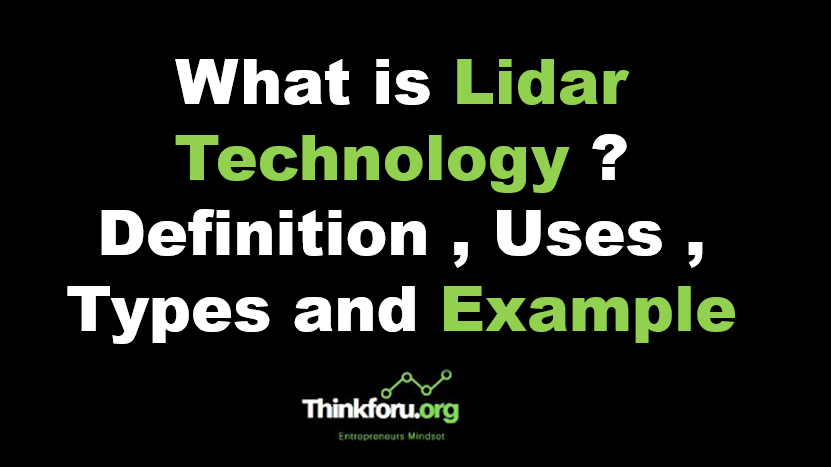What is Lidar Technology ? Definition , Uses , Types and Example
What is Lidar technology? Definition, Uses, Types, and Example
 |
| Cover IMage of What is Lidar Technology ? Definition , Uses , Types and Example |
Lidar, short for Light Detection and Ranging, is a remote sensing technology that utilizes laser pulses to measure distances to the Earth's surface. It operates on the principle of sending out laser beams and measuring the time it takes for the light to reflect back, allowing for highly accurate 3D mapping and imaging.
Here's an overview of lidar technology:
 |
| Lidar technology involves emitting laser pulses from a sensor and measuring the time it takes for the light to return after bouncing off objects |
Lidar Technology Definition:
Lidar technology involves emitting laser pulses from a sensor and measuring the time it takes for the light to return after bouncing off objects. This process enables the creation of precise 3D maps and models of terrain, buildings, vegetation, and other features on the Earth's surface.
Lidar Technology Uses:
1. Topographic Mapping: Lidar is extensively used in cartography and geology for creating highly accurate digital elevation models (DEMs) and topographic maps.
2. Urban Planning and Development: Lidar assists urban planners in understanding city landscapes, assessing flood risks, and planning infrastructure projects.
3. Forestry and Agriculture: Lidar aids in forest inventory management, estimating biomass, and monitoring crop health.
4. Environmental Monitoring: Lidar is valuable for monitoring environmental changes such as coastal erosion, glacier retreat, and deforestation.
5. Transportation and Autonomous Vehicles: Lidar plays a crucial role in autonomous vehicle navigation, providing real-time data for obstacle detection and localization.
6. Archaeology and Cultural Heritage: Lidar helps archaeologists discover and map ancient structures, landscapes, and archaeological sites.
7. Disaster Management: Lidar assists in disaster preparedness and response by providing accurate terrain data for flood modeling, landslide prediction, and emergency planning.
Lidar Technology Types:
1. Airborne Lidar: Mounted on aircraft or drones, airborne lidar systems capture data over large areas quickly and efficiently.
2. Terrestrial Lidar: Stationary or mobile ground-based lidar systems are used for detailed scanning of smaller areas, such as urban environments or archaeological sites.
3. Spaceborne Lidar: Lidar sensors mounted on satellites capture data on a global scale, providing insights into Earth's atmosphere, land, and oceans.
Lidar Technology Example:
An example of lidar technology in action is its use in autonomous vehicles. Lidar sensors mounted on self-driving cars emit laser pulses to detect surrounding objects such as pedestrians, vehicles, and obstacles. By continuously scanning the environment in real-time, lidar enables autonomous vehicles to navigate safely and make informed decisions based on the surrounding terrain and objects.